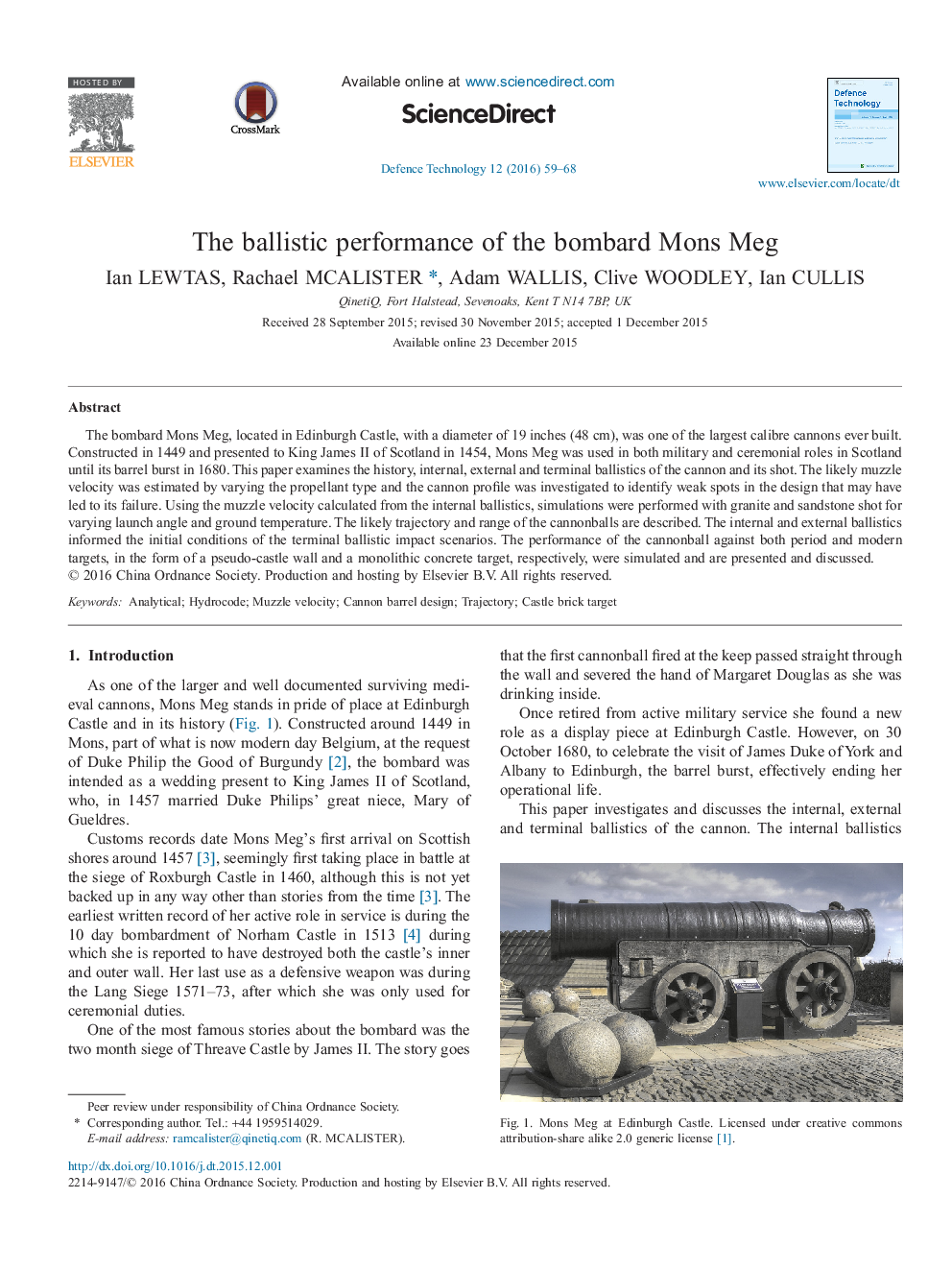| Article ID | Journal | Published Year | Pages | File Type |
|---|---|---|---|---|
| 759441 | Defence Technology | 2016 | 10 Pages |
The bombard Mons Meg, located in Edinburgh Castle, with a diameter of 19 inches (48 cm), was one of the largest calibre cannons ever built. Constructed in 1449 and presented to King James II of Scotland in 1454, Mons Meg was used in both military and ceremonial roles in Scotland until its barrel burst in 1680. This paper examines the history, internal, external and terminal ballistics of the cannon and its shot. The likely muzzle velocity was estimated by varying the propellant type and the cannon profile was investigated to identify weak spots in the design that may have led to its failure. Using the muzzle velocity calculated from the internal ballistics, simulations were performed with granite and sandstone shot for varying launch angle and ground temperature. The likely trajectory and range of the cannonballs are described. The internal and external ballistics informed the initial conditions of the terminal ballistic impact scenarios. The performance of the cannonball against both period and modern targets, in the form of a pseudo-castle wall and a monolithic concrete target, respectively, were simulated and are presented and discussed.
